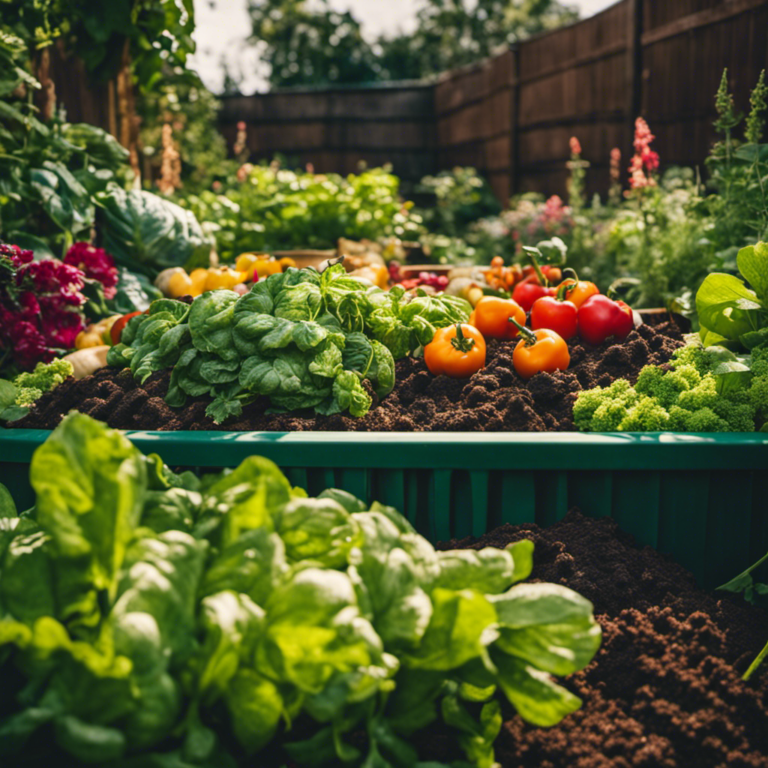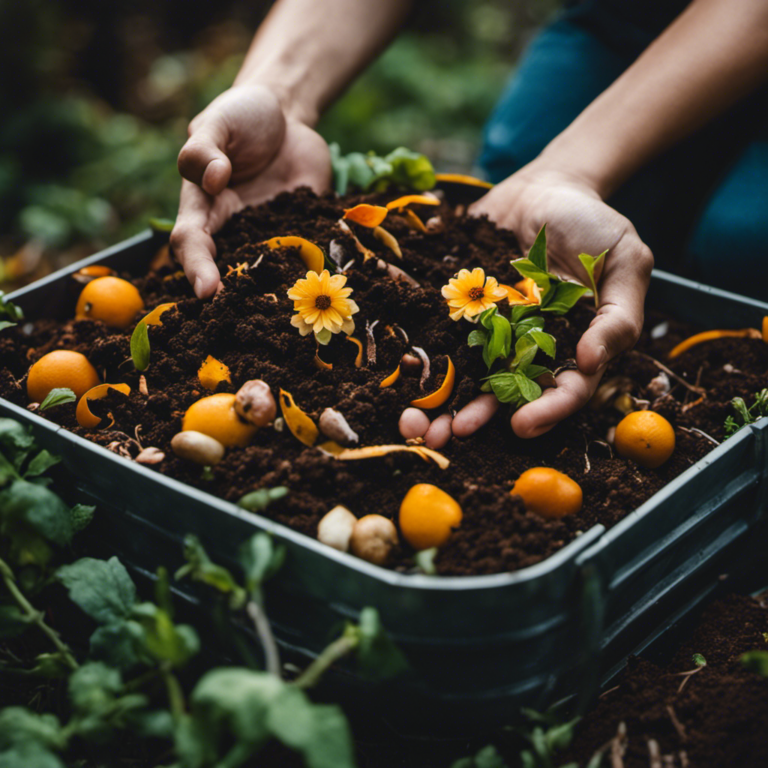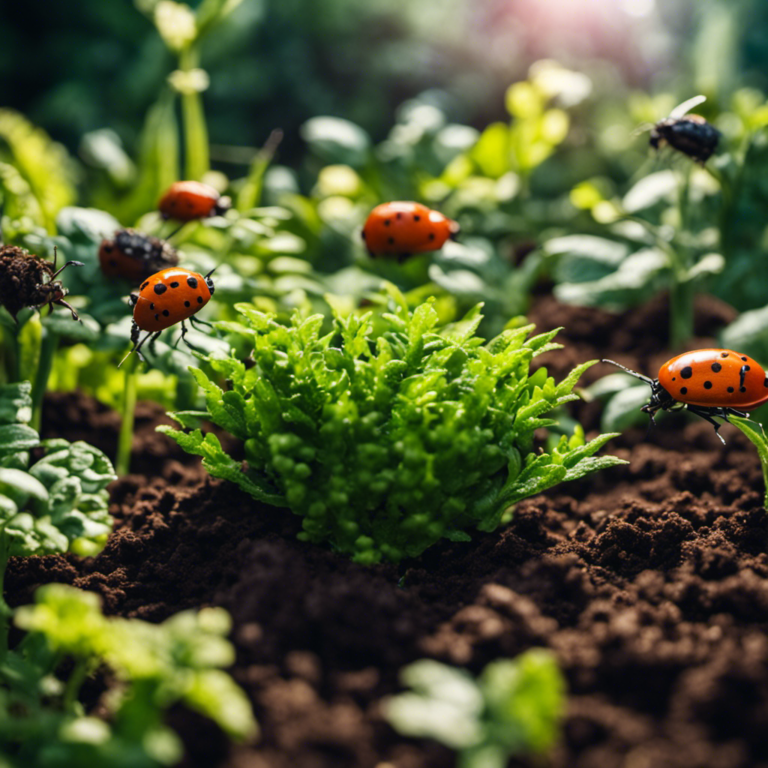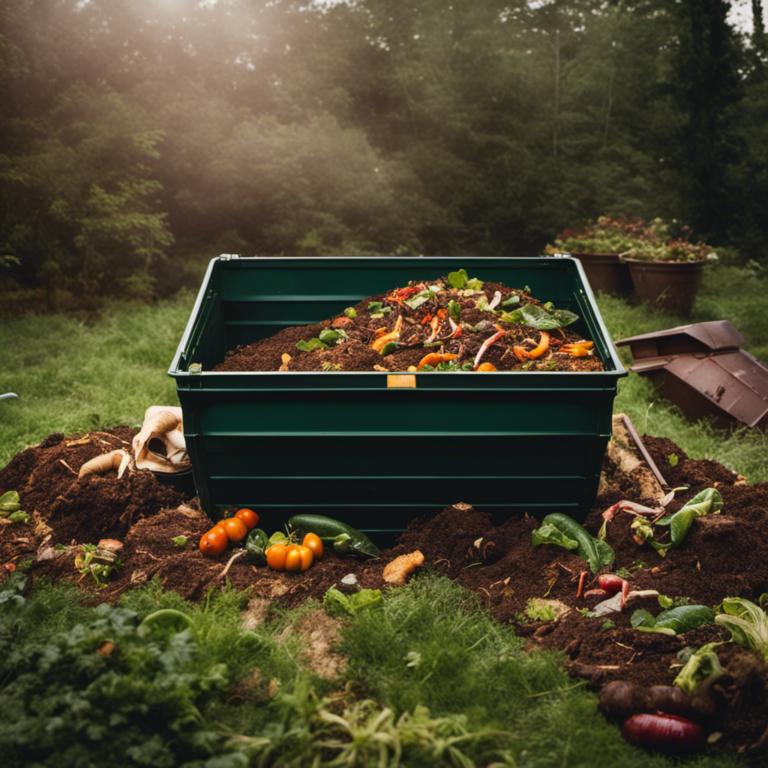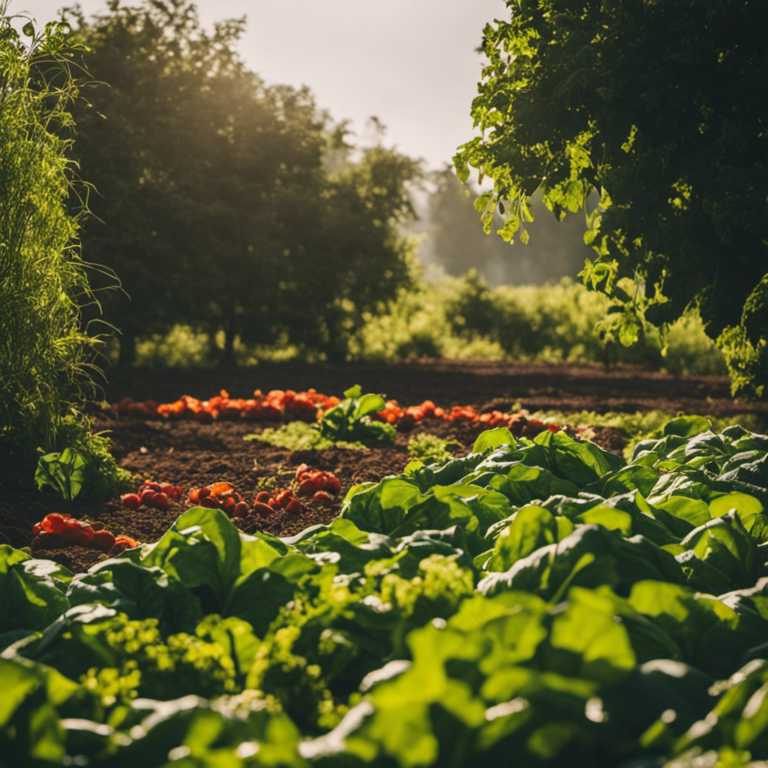Are you interested in getting started with organic composting? Well, you’ve come to the right place!
In this article, I’ll guide you through the basics of organic composting and share some easy techniques that are perfect for beginners. Whether you have a green thumb or are just starting out, we’ll explore how to choose the right method, the essential tools you’ll need, and provide tips for maintaining the perfect compost pile.
So let’s roll up our sleeves and dive into the world of composting!
Key Takeaways
Organic composting is a simple and rewarding technique that can transform your garden. By choosing the right method and using essential tools, you can create a balanced compost pile that will provide rich nutrients for your plants.
To ensure optimal decomposition, it’s important to maintain the temperature and moisture levels. This will help break down the organic materials efficiently. Once the compost is ready, you can harvest it and witness the vibrant growth it brings to your garden.
Composting is an essential practice for any gardener, whether you’re a beginner or have some experience. It not only reduces waste but also improves soil health and promotes sustainable gardening. So why not give it a try and see the difference it makes in your garden?
Happy composting!
Choosing the Right Composting Method
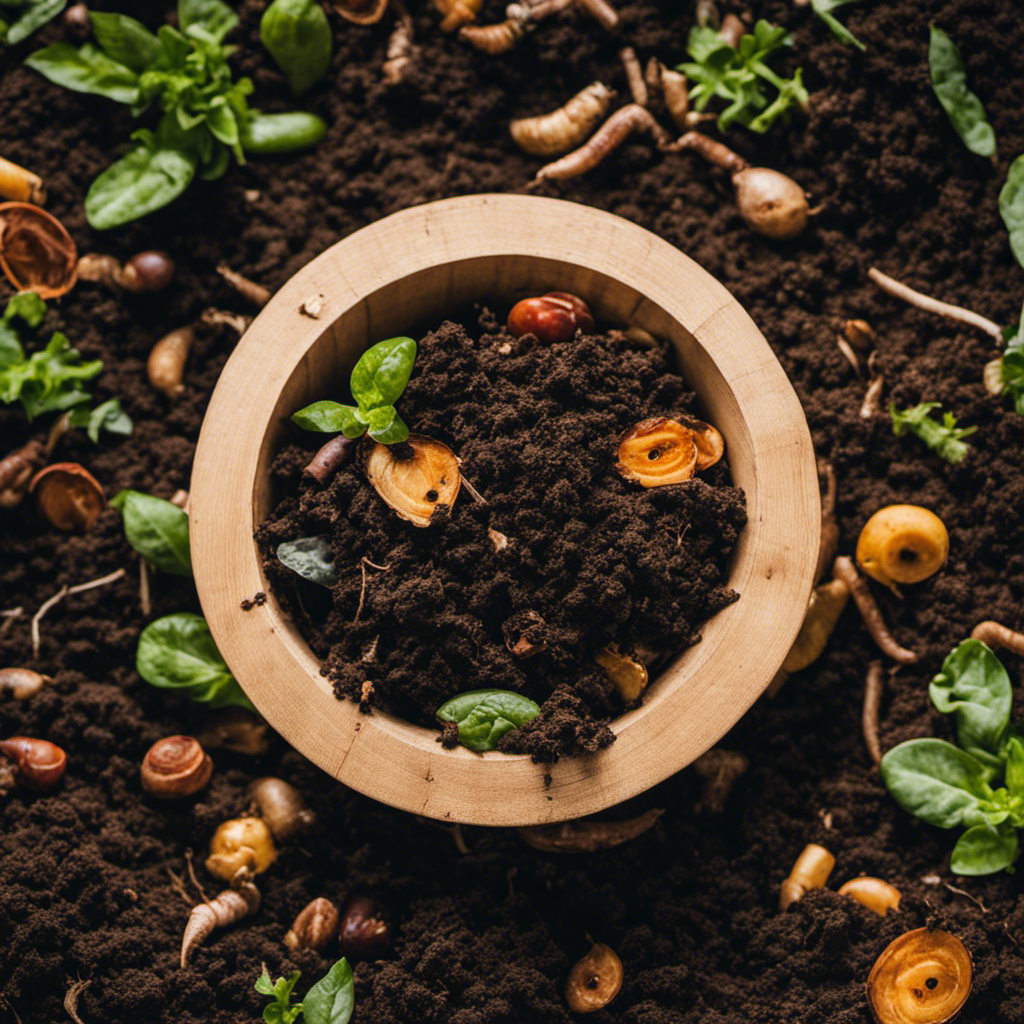
Choosing the Right Composting Method
When it comes to composting, I find that using a compost tumbler is my preferred method. Composting has numerous benefits for both the environment and your garden. By composting, you can reduce waste sent to landfills and instead create nutrient-rich soil for your plants. Additionally, composting helps improve soil structure, retain moisture, and control plant diseases.
However, composting can come with its fair share of challenges. One common issue is a smelly compost pile, which is often caused by excessive moisture or inadequate airflow. To address this, it’s essential to maintain a proper balance of green and brown materials in your compost pile. Regularly turning the pile can also promote better airflow. Another challenge is a slow composting process, which may result from a lack of nitrogen or carbon or an improper balance between the two. To remedy this, ensure you have a good mix of green and brown materials, and consider adding compost activators like manure or grass clippings.
In conclusion, selecting the right composting method is crucial for successful composting. A compost tumbler is a practical choice, particularly for beginners, as it provides a controlled environment and makes turning the compost easier. By addressing common composting problems and following these tips, you can ensure a smooth and productive composting journey.
Composting is a simple yet impactful way to reduce waste and enrich your garden. By choosing the right method and troubleshooting any issues that arise, you can create nutrient-rich soil and contribute to a healthier environment.
Essential Tools for Organic Composting
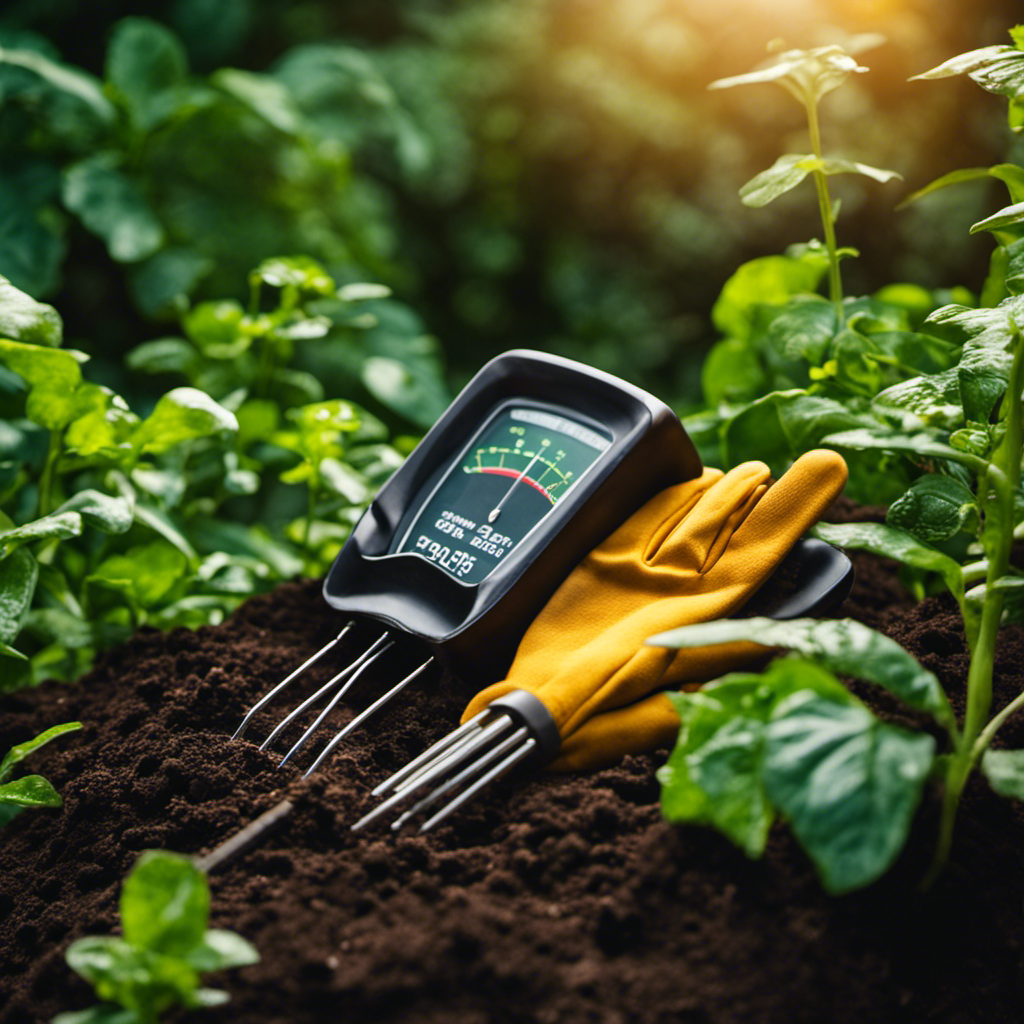
If you’re new to organic composting, it’s important to have the right tools to get started. Here are four essential tools that will help you on your composting journey:
-
Compost Bin: Choose a compost bin that fits your needs and available space. There are different types to choose from, such as tumblers, bins, and piles. Tumblers work well for small spaces and provide easy turning and aeration. Bins are a great option for larger spaces and offer better insulation. Piles require more space but are cost-effective.
-
Pitchfork or Compost Turner: A pitchfork or compost turner is essential for turning and aerating the compost pile. This helps speed up the decomposition process and prevents the formation of bad odors and slow decomposition due to lack of oxygen.
-
Kitchen Compost Pail: Make your composting process more convenient with a kitchen compost pail. It allows you to collect kitchen scraps before transferring them to the compost bin. Look for a pail with a tight-fitting lid and a carbon filter to control odors.
-
Thermometer: Monitoring the temperature of your compost pile is crucial for successful composting. A compost thermometer will help you determine if your pile is reaching the optimal temperature for decomposition. Aim for a temperature between 120-160°F (49-71°C).
Creating a Balanced Compost Pile
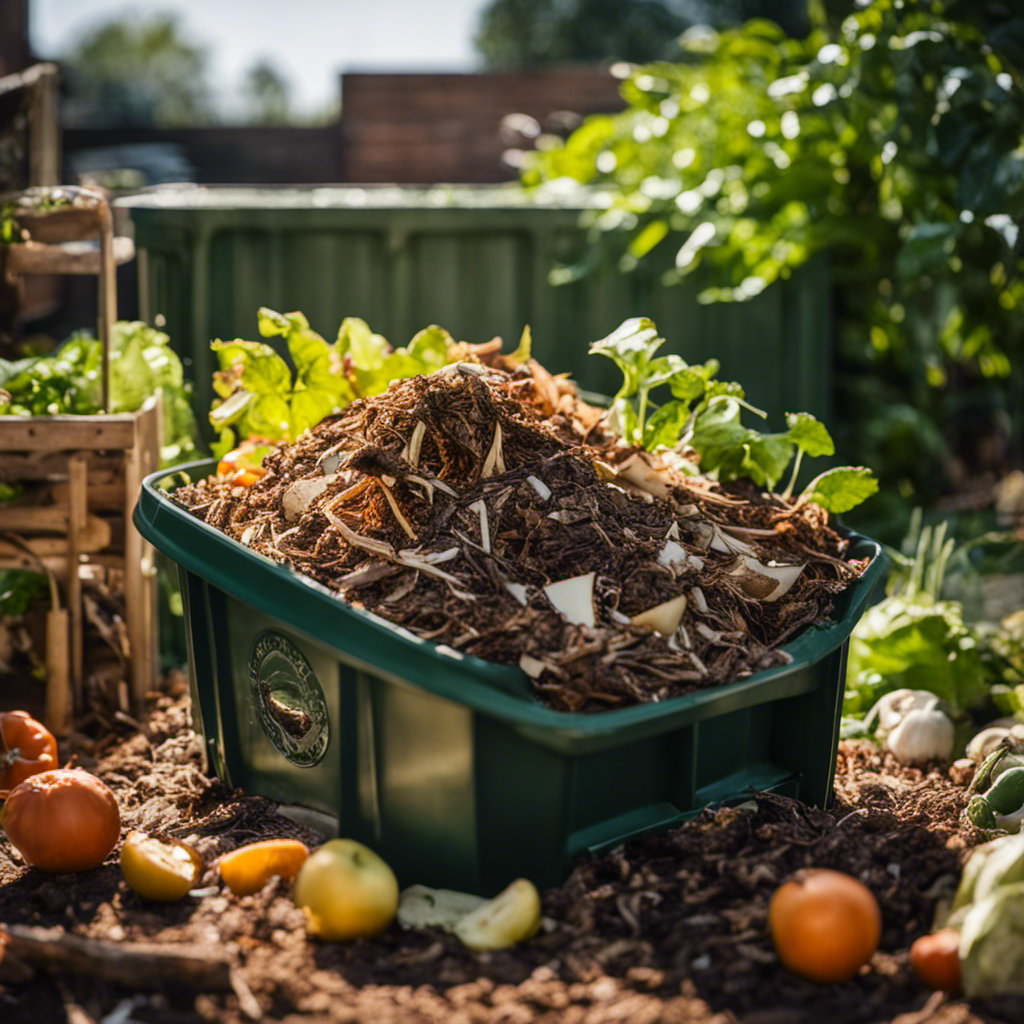
Creating a Balanced Compost Pile
A balanced compost pile requires a careful mix of organic materials, moisture, and air circulation. Achieving decomposition in your compost pile can be a rewarding experience, but it’s important to understand the key elements that contribute to a successful composting process.
Let’s start by talking about organic materials. To create a balanced compost pile, you’ll need a mix of ‘green’ and ‘brown’ materials. Green materials include things like grass clippings, kitchen scraps, and fresh plant trimmings. These materials are rich in nitrogen and help speed up the decomposition process. Brown materials, on the other hand, are high in carbon and include items such as dried leaves, straw, and wood chips. It’s important to have a good balance of both green and brown materials to provide the right carbon-to-nitrogen ratio for your compost pile.
Next, let’s discuss moisture. Your compost pile should be moist, but not soaking wet. Too much moisture can lead to a smelly pile and slow down the decomposition process. On the other hand, if your pile is too dry, decomposition will also slow down. Aim for a moisture level similar to that of a damp sponge. If your pile is too wet, add dry materials like leaves or straw. If it’s too dry, water it lightly with a hose or sprinkle it with a watering can.
Lastly, air circulation is crucial for achieving decomposition. Make sure to turn or aerate your compost pile regularly to provide oxygen to the microorganisms that break down the organic materials. You can do this with a pitchfork or a compost turner. Turning your pile also helps with composting troubleshooting by preventing it from becoming compacted or developing unpleasant odors.
In summary, creating a balanced compost pile involves a careful mix of organic materials, moisture, and air circulation. By following these guidelines, you’ll be on your way to producing nutrient-rich compost for your garden.
Happy composting!
Tips for Maintaining Compost Temperature and Moisture
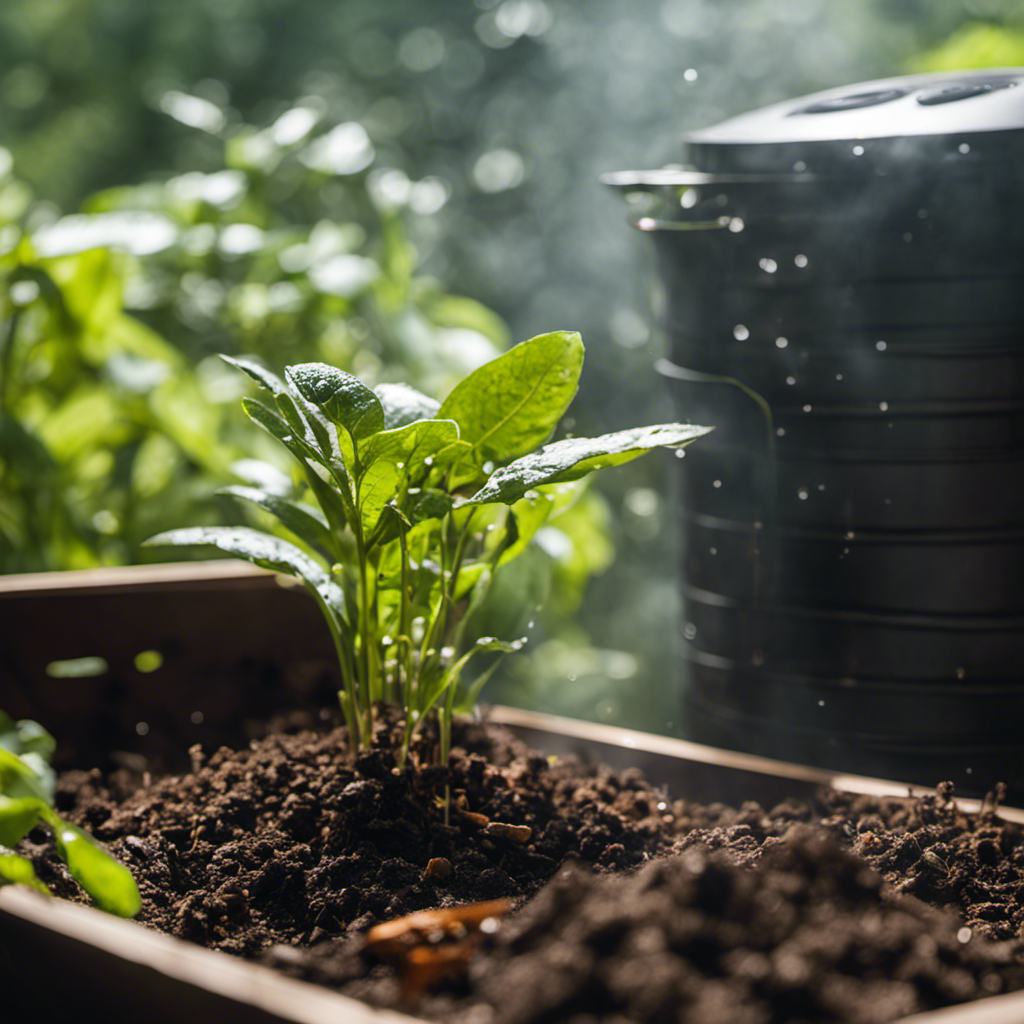
Tips for Maintaining Compost Temperature and Moisture
Maintaining the temperature and moisture of your compost is crucial for successful decomposition and nutrient-rich compost production. Here are some practical tips to help you keep your compost pile at the optimal temperature and moisture levels:
-
Monitor the temperature:
- Regularly check your compost pile’s temperature using a compost thermometer.
- The ideal temperature range is between 120°F and 160°F (49°C and 71°C).
- If the temperature is too low, decomposition may be ineffective.
- Conversely, high temperatures can harm beneficial microorganisms.
- Adjust the temperature by adding more nitrogen-rich materials, like grass clippings, for increased heat or carbon-rich materials, such as dry leaves, to cool it down.
-
Maintain moisture levels:
- Your compost pile should have the consistency of a damp sponge.
- Excessive moisture can lead to a smelly, anaerobic compost pile, while insufficient moisture can slow down decomposition.
- Aim for a moisture level of around 50-60%.
- To increase moisture, water your pile with a hose or add wet kitchen scraps.
- To reduce moisture, incorporate dry materials like shredded newspaper or straw.
-
Regularly turn the pile:
- Turning your compost pile helps evenly distribute heat and moisture, ensuring efficient decomposition of all materials.
- Use a pitchfork or compost turning tool to mix the outer layers into the center of the pile.
- Turning the pile every 1-2 weeks also helps control odors and prevent the growth of unwanted organisms.
-
Troubleshoot common composting problems:
- If you encounter issues such as foul odors, fruit flies, or slow decomposition, refer to a troubleshooting guide to identify the problem and take appropriate action.
- For example, controlling odors can be achieved by adding more carbon-rich materials, while more frequent turning can speed up decomposition.
Harvesting and Using Compost in Your Garden
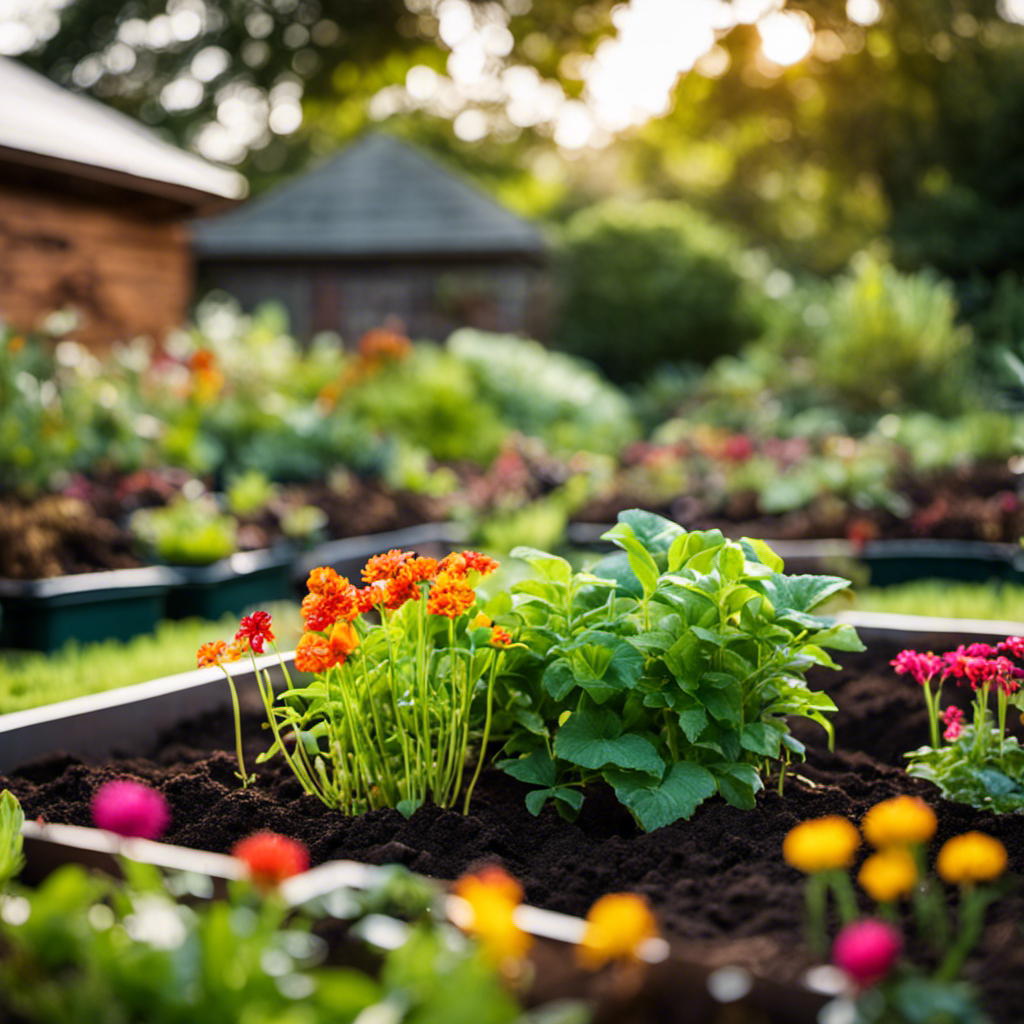
As someone new to organic composting, I discovered that harvesting and using nutrient-rich compost in my garden was a fulfilling result of my efforts. Not only did it help reduce waste and improve soil fertility, but it also offered numerous benefits for my container gardening and landscaping projects.
One of the major advantages of using compost in container gardening is its ability to enhance soil structure. Compost aids in retaining moisture, preventing soil erosion, and promoting healthy root development. It also provides a gradual release of nutrients, ensuring that plants receive a steady supply of essential elements.
Incorporating compost into landscaping projects can be achieved in various ways. One option is to add a layer of compost to existing beds, which improves soil fertility and overall plant health. Another approach is to mix compost into the soil when planting new shrubs or trees, providing a nutrient boost and enhancing moisture retention.
To provide a clearer understanding, here’s a table outlining the benefits of using compost in container gardening and different ways to incorporate it into landscaping projects:
| Benefits of Using Compost in Container Gardening | Different Ways to Incorporate Compost into Landscaping Projects |
|---|---|
| Enhances soil structure | Top-dress existing beds |
| Retains moisture | Mix into soil when planting new shrubs or trees |
| Provides gradual release of nutrients | Improves overall plant health |
Conclusion
Organic composting is a rewarding and beginner-friendly technique that can transform your garden. By choosing the right method and using essential tools, you can create a balanced compost pile that will provide rich nutrients for your plants.
It’s important to maintain the temperature and moisture levels for optimal decomposition. Once ready, harvest the compost and witness the vibrant growth it brings to your garden.
Happy composting!

